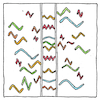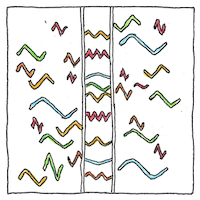Hendrik Casimir,
Dirk Polder
quantum mechanics

|
Casimir effect
Van der Waal forces Conductors and dielectrics Quantum harmonic oscillators Virtual photons Hendrik Casimir and Dirk Polder studied what happens between two conductive plates extremely close together in a vacuum. The energy inherent in empty space results in the Casimir–Polder force, a physical force that pulls the plates together or pushes them apart.
One atmosphere
When the plates are separated by only ten nanometers the Casimir-Polder force is equal to about one atmosphere. If you think one mere atmosphere is only a small amount of pressure, consider Otto von Guericke’s Magdeburg experiment in which two copper hemispheres put together and pumped free of air could not be pulled apart by teams of horses.
“Sewing Vacuum”
Space isn’t ever empty. Out of perturbations of a quantum field, invisible particles appear, and before they merge and disappear, sew wedding dresses and knit baby blankets, bibs, and booties. What pulls these particles from the fabric of timelessness? What sufficiently perturbs nothing at all if only temporarily into something old, something new, something borrowed, something blue? The answer to this mystery is probably not the shop on Fifteenth Avenue and 56th Street that sells sewing machines and vacuum cleaners.



Empty space is empty only in that all excitations of the quantum field—all spins, polarizations, energies, masses, and momentums—eventually cancel each other out; however, in the short term, between two plates close enough together, we see that the term “virtual particles” describes particles that may be transient but are as real as other particles.
See also in The book of science:
Readings in wikipedia: